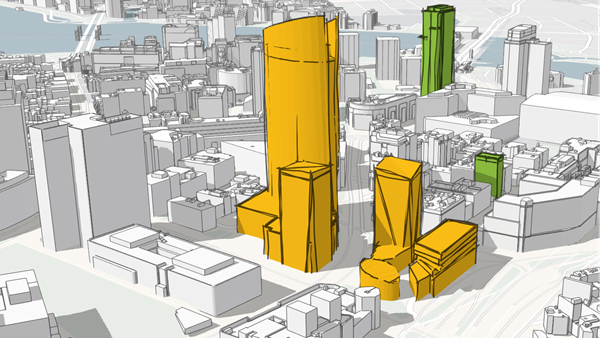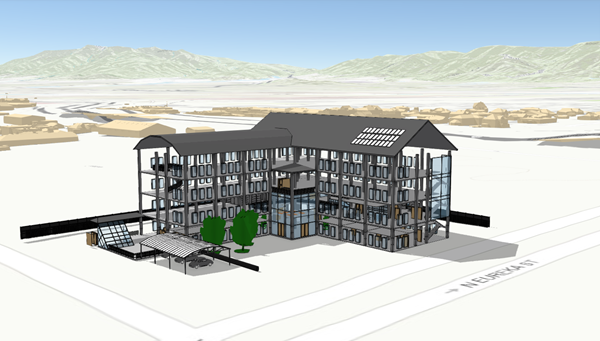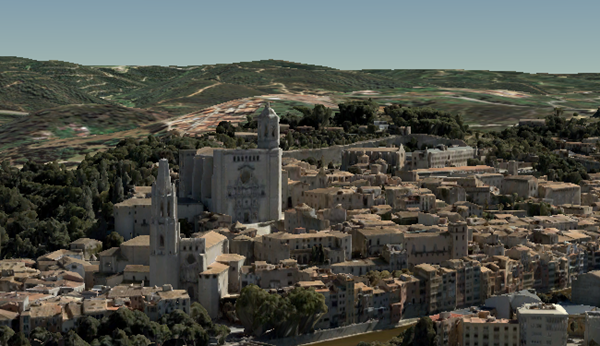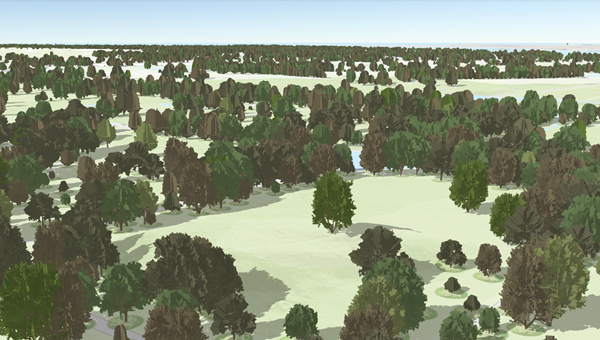Web scene layers are cached web layers that are optimized for displaying a large amount of features and can be viewed in Scene Viewer and ArcGIS Pro. Scene layers include the following types:  3D object,
3D object,  building,
building,  integrated mesh,
integrated mesh,  point, and
point, and  point cloud layers. When sharing a scene layer, a feature layer that is used to generate the cache is also shared.
point cloud layers. When sharing a scene layer, a feature layer that is used to generate the cache is also shared.
Scene layers can be shared to an ArcGIS Enterprise portal using a scene layer package generated from ArcGIS Pro or you can publish 3D data from ArcGIS Pro. When you publish directly from ArcGIS Pro, it creates a hosted feature layer and hosted scene layer on your portal. These two layers are related; if you delete the scene layer, the hosted feature layer is also deleted.
Beginning with ArcGIS Pro 2.1, a hosted scene layer is still created when you publish 3D data, but you have the option to leave the feature data in your registered data source rather than create a hosted feature layer. Creating a feature layer that references your registered data can help improve publishing performance. However, the two layers are no longer as closely related; when you delete the scene layer, the feature layer is not deleted.
3D object
3D object scene layers can be used to represent and visualize 3D objects, such as textured or untextured buildings that are modeled in 3D. From ArcGIS Pro you can create a 3D object scene layer from multipatch data published directly to ArcGIS Enterprise either as a web scene layer with an associated feature layer or from a scene layer package (SLPK). In ArcGIS Enterprise you can publish a 3D object scene layer from a hosted feature layer. Finally, Esri CityEngine 2016.0 and later can export and SLPK from which you can publish a 3D object scene layer.

Building
Building scene layers can visualize complex digital models of buildings and allow you to interact with all the components of the building. With building scene layers, you can explore a buildings composition, properties, and location of structures within a building digital model. Building scene layers allow you to query and isolate discipline layers, such as structural or architectural, or categories, such as walls or roofs. They are used widely for engineering, architecture, surveying and construction purposes. You can publish a building scene layer from ArcGIS Pro 2.3 or later as an SLPK.

Integrated mesh
Integrated mesh data is typically captured by an automated process for constructing 3D objects from large sets of overlapping imagery. The result integrates the original input image information as a textured mesh using a triangular interlaced structure. An integrated mesh can represent built and natural 3D features, such as building walls, trees, valleys, and cliffs, with realistic textures and includes elevation information. Integrated mesh scene layers are generally created for citywide 3D mapping and can be created using Drone2Map for ArcGIS and ArcGIS Pro 2.2, which can then be shared to ArcGIS Online as a SLPK.

Point
To ensure fast visualization in all clients, cached point scene layers are used to display large amounts of point data not possible with a point feature layer. Point scene layers are automatically thinned to improve performance and visibility at smaller scales. Automatic thinning means that not all features are displayed at small scales; as you zoom in, additional features are displayed; for example, you may use a point scene layer to display all the trees in a city. From ArcGIS Pro you can create a point scene layer from a feature layer shared directly to ArcGIS Enterprise as a web scene layer. Also, in ArcGIS Enterprise you publish a point scene layer from a hosted feature layer.

Point cloud
Point cloud scene layers allow for fast consumption and display of large volumes of point cloud data in Scene Viewer and ArcGIS Pro 1.4 or later. You can apply smart mapping styles to point cloud scene layers in Scene Viewer. You can also configure these layers in ArcGIS Pro and publish them to ArcGIS Onlineas a SLPK. Point cloud scene layers in Scene Viewer can appear different based on the symbology renderer type configured from ArcGIS Pro. Scene Viewer supports the following renderer types from ArcGIS Pro
Point cloud scene layers allow for fast consumption and display of large volumes of point cloud data in Scene Viewer and ArcGIS Pro 1.4 or later. You can apply smart mapping styles to point cloud scene layers in Scene Viewer. You can also configure these layers in ArcGIS Pro and publish them to the ArcGIS Enterprise portal. Point cloud scene layers in Scene Viewer can appear different based on the symbology renderer type configured from ArcGIS Pro. Scene Viewer supports the following renderer types from ArcGIS Pro:
- Stretch
- Classify
- Unique Values
- RGB
